Syedra Ancient City Remains - A Touch Of History

Turkey is an incredible country with a rich history and truly unique nature. I was lucky to get to know it from different sides. Having bypassed the entire center of Alanya, we decided to get out of the countryside. Our plan was to visit the ruins Syedra ancient city, built on the top of a hill, means it is high above the coast.

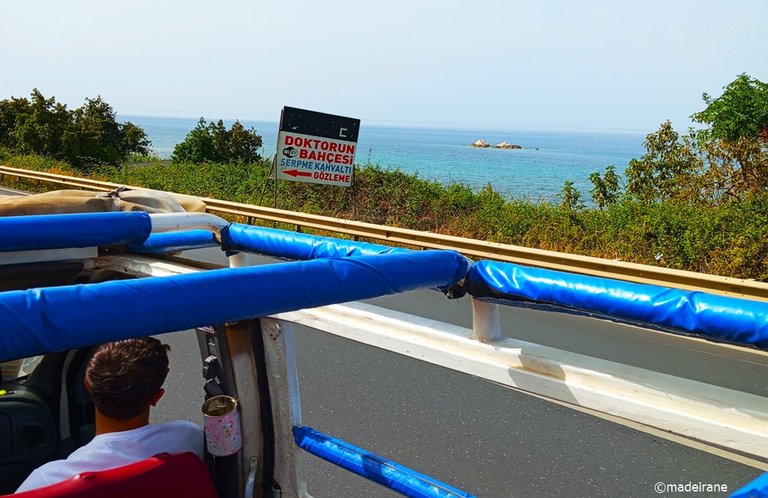
The first mention of Syedra in written sources dates back to the middle of the first century before our era. And on the official site of the administration of Alanya, it is mentioned that there are buildings from the 7th century on the territory of the city. This Syedra is known for being on the side of the Roman emperor, and an ancient Roman state figure, commander and consul of the Roman Empire - Gnaeus Pompey the Great - stayed on its territory.

The ancient city of Syedra, the largest and most important port city of the Roman Empyre, is a remarkable example of what Roman settlement looked like. The city was divided into two parts, lower and upper: port (lower), located at sea level and at a height of 400 m (above sea level). It is known that the city had its own mint, where its own coins were minted. The city existed until the 13th century; Syedra was abandoned when the entire southern coast of modern Turkey was captured by the Seljuks.

Syedra is located between the two cities of Alanya and Gazipasa. To get to the old town, you will have to walk some distance, leaving your car in a free parking lot. Be ready to overcome a lot of stairs. We booked a tour and did not care about transport as we arrived in a jeep convertible. We got to the place through banana plantations and settlements of local residents all the time, going up and up. There were only bananas around, but there were pomegranates, lemons, and finally lime.


Having climbed up, the first thing we saw were the columns that lay in rows along the road. They are almost intact! As if the wind blew them away and they just lay there. Absolutely round, how did they make them? The city, in fact, is not very well-preserved. Only individual elements remain, but this adds mystery to the city. You can give free rein to your imagination and imagine in your own way how everything once was here.


Next to the columns, in fact, a view of everything that remains of the city opens up. These are majestic walls built of stones. Their height and integrity are perplexing.

Then, passing the Western city gate, we got to the Basilica. You can't go outside the gate, there are impassable thickets. The gate itself, like many other buildings, has also been taken over by plants.
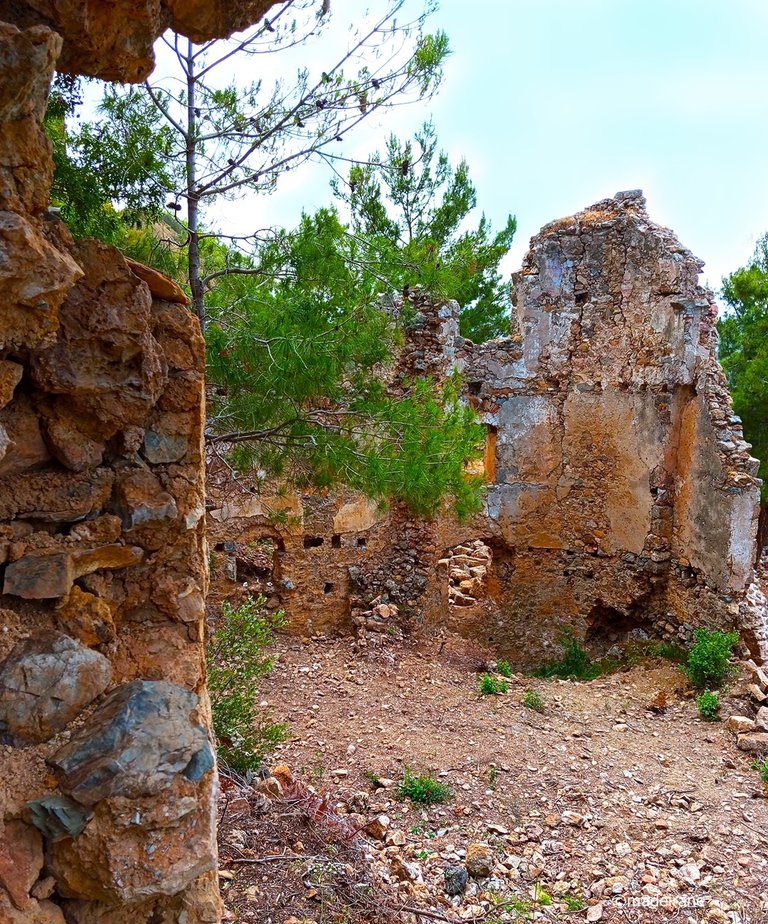
There is practically nothing left behind these walls. It is very difficult to figure out what kind of place this is and what function the ruins under my feet served. In some places, you could find some niches in the walls - what are they? God knows. It's hard to imagine what must have happened to the city so that practically nothing remains of it. There are objects that seem to be timeless! A little higher up is the Baptismal cave.

The main buildings are in the eastern part of the city, so after returning, resting on the benches, drinking coffee stored in a thermos at the hotel, we went on. Moving along Western Street, passing the Southwestern city gate, we found ourselves on the territory of the Southern necropolis.

There are not many surviving crypts here, or they are located somewhere down the slope.
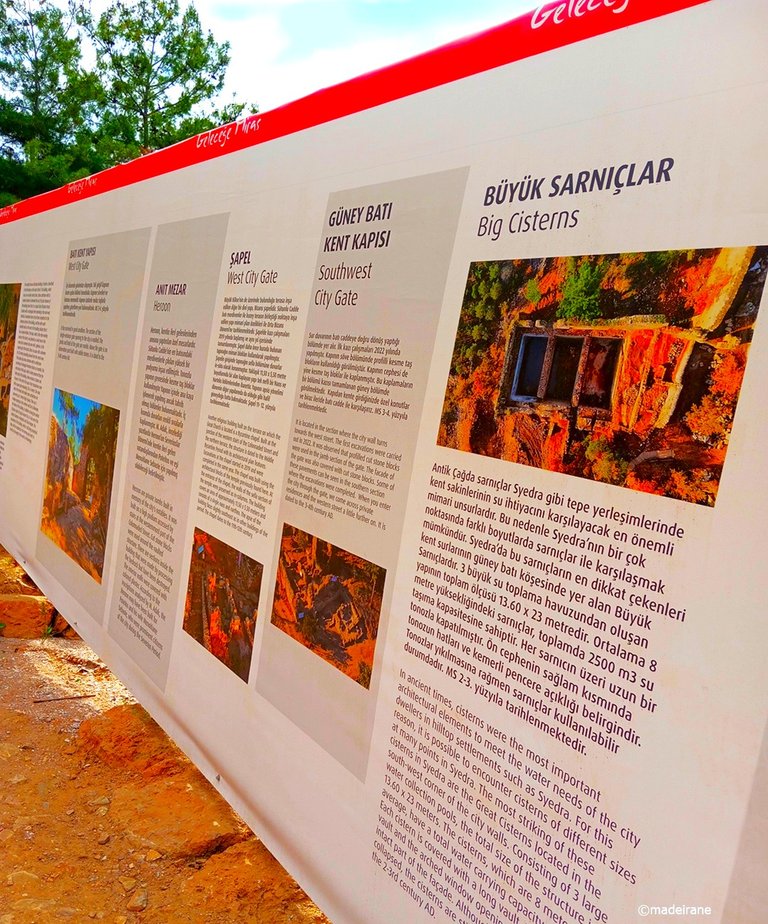
Having admired the beautiful views of one of the most remote areas of Alanya - Demirtas, we headed further along the wooden stairs that go far up. Passing the remains of the foundation of the South-Eastern Temple, we began to move towards the best-preserved part of the city. Another steep climb, of which there are plenty here, and we find ourselves on Colonnaded Street, 20 meters wide and 250 meters long.

I immediately remember a walk through the old town of Side, its columned avenue. I will note that on the territory of the ancient city of Syedra, a street with columns looks no less interesting, and even the opposite.
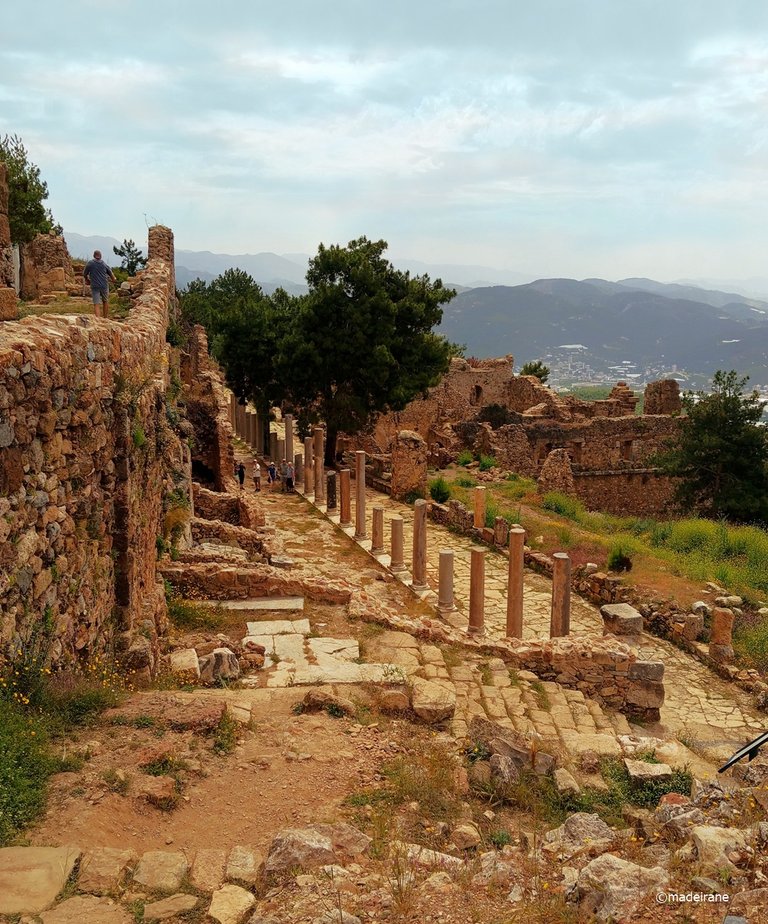
This place was important for the city. Various events were held here. Most likely it was used as a city square, a market. It is not for nothing that a message from Emperor Septimius Severus, received in 194 BC, was placed here, paved in stone, as a token of gratitude for the suppression of periodically arising rebel activity against the city and its possessions. And even now you can find some fragments of buildings with writings here.

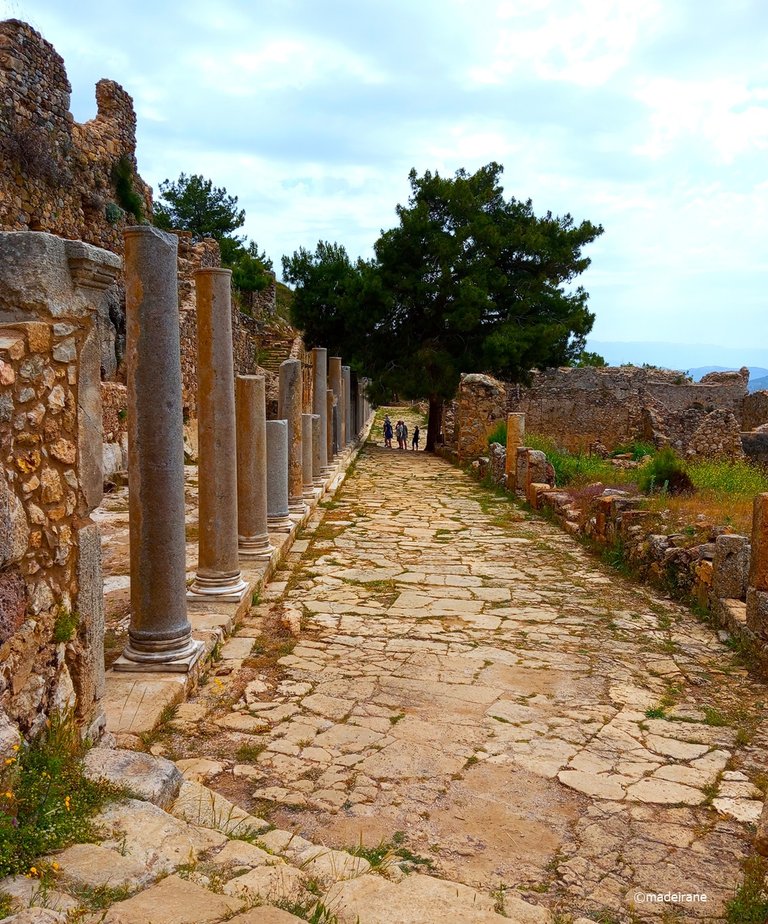
You can touch the history of a couple of dozen centuries.
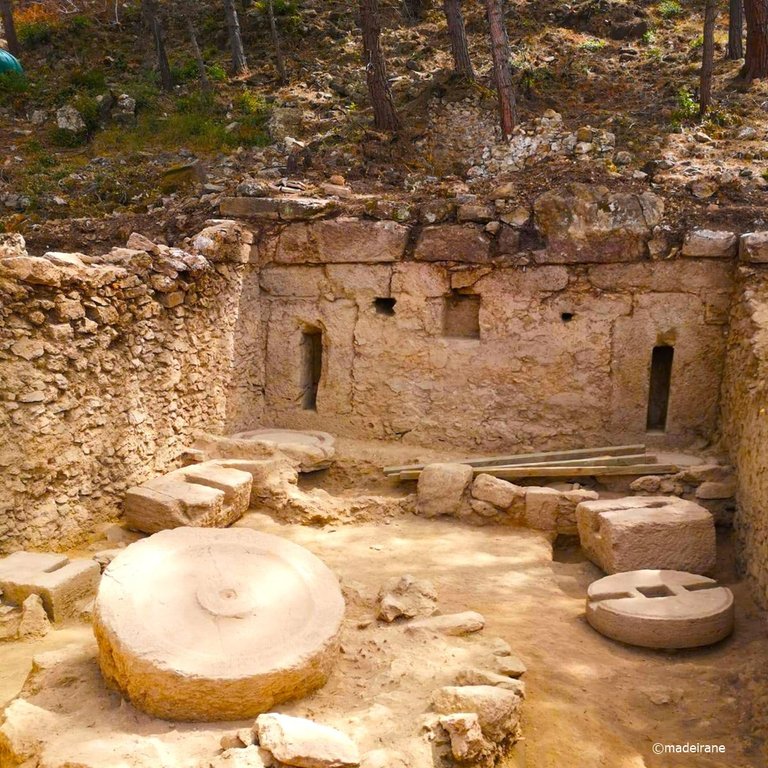
What I also like here is that there are no restrictions or fences. No one prevents you from going down and examining any building in detail, such as the Grand Bathhouse or, as it would be more correct to call it, the Roman Baths complex.

Having climbed around the former baths, we went to the highest point of Syedra - to the Acropolis. At the end of the columned street is the main staircase that leads to the Monumental Tomb, or rather to what remains of the tomb in which some significant and influential person once rested.

Having looked around the central square of the old city once more and admired the beautiful view from the tomb, we moved on to the Acropolis. The views from the ruins of the acropolis are even more impressive than what we had seen before. A panoramic view opens up in all directions, including the Taurus Mountains and Alanya.
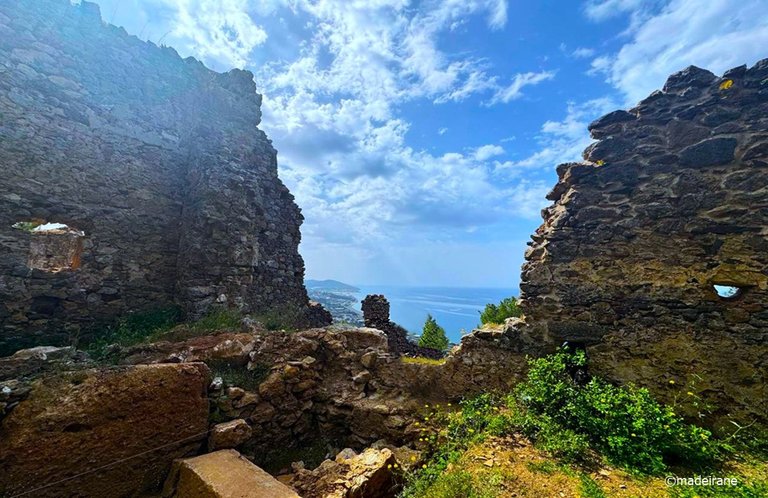
While actively taking pictures, I didn't notice how the battery died, although there was still so much interesting ahead. For this reason, there were places that were not captured, but oh well, the most important thing is that they remained in my own memory.

Only positive impressions. This is, indeed, an interesting place, one of many of which there are plenty in Turkey. The ancient buildings are very well-preserved, and restorers have already managed to do a good job here. However, walking around the territory of the ancient city of Syedra, you can easily imagine how it looked at the time of its prosperity.

💝💝💝💝💝💝💝💝💝💝
With love, @madeirane
Photos are taken by me.
© 2025
Translated from Lithuanian with DeepL.com (free version)
Turkija yra neįtikėtina šalis su turtinga istorija ir išties unikalia gamta. Man pasisekė ją pažinti iš įvairių pusių. Aplenkę visą Alanijos centrą, nusprendėme išvykti į užmiestį. Mūsų planas buvo aplankyti Syedros senovinio miesto griuvėsius, pastatytus ant kalvos viršūnės, vadinasi, jis yra aukštai virš pakrantės.
Pirmą kartą rašytiniuose šaltiniuose Syedra paminėta I a. prieš mūsų erą viduryje. O oficialioje Alanijos administracijos svetainėje minima, kad miesto teritorijoje yra VII a. pastatų. Ši Syedra žinoma dėl to, kad buvo Romos imperatoriaus pusėje, o jos teritorijoje buvo apsistojęs senovės Romos valstybės veikėjas, Romos imperijos vadas ir konsulas - Gnėjus Pompėjus Didysis.
Antikinis Syedros miestas, didžiausias ir svarbiausias Romos imperijos uostamiestis, yra puikus pavyzdys, kaip atrodė romėnų gyvenvietė. Miestas buvo padalytas į dvi dalis - žemutinę ir aukštutinę: uostą (žemutinę), įsikūrusį jūros lygyje ir 400 m aukštyje (virš jūros lygio). Žinoma, kad miestas turėjo savo monetų kalyklą, kurioje buvo kaldinamos savos monetos. Miestas gyvavo iki XIII a.; Syedra buvo apleista, kai visą pietinę dabartinės Turkijos pakrantę užėmė seldžiukai.
Syedra yra tarp dviejų miestų - Alanijos ir Gazipašos. Norėdami nuvykti į senamiestį, turėsite nueiti tam tikrą atstumą pėsčiomis, o automobilį palikti nemokamoje automobilių stovėjimo aikštelėje. Būkite pasiruošę įveikti daug laiptų. Mes užsisakėme ekskursiją ir nesirūpinome transportu, nes atvykome džipu kabrioletu. Į vietą patekome per bananų plantacijas ir vietinių gyventojų gyvenvietes visą laiką kildami vis aukštyn ir aukštyn. Aplink buvo tik bananai, bet buvo ir granatmedžių, citrinų, galiausiai - laimo.
Pakilę į viršų, pirmiausia pamatėme stulpus, kurie gulėjo eilėmis palei kelią. Jie beveik nepaliesti! Tarsi vėjas juos būtų nupūtęs ir jie tiesiog gulėjo. Absoliučiai apvalūs, kaip jie juos padarė? Miestas, tiesą sakant, nėra labai gerai išsilaikęs. Išlikę tik atskiri elementai, tačiau tai miestui suteikia paslaptingumo. Galite duoti valią savo vaizduotei ir savaip įsivaizduoti, kaip viskas čia kadaise atrodė.
Šalia kolonų, tiesą sakant, atsiveria vaizdas į viską, kas liko iš miesto. Tai didingos iš akmenų sumūrytos sienos. Jų aukštis ir vientisumas glumina.
Paskui, praėję vakarinius miesto vartus, patekome į baziliką. Už vartų išeiti negalima, ten yra nepraeinami krūmynai. Pačius vartus, kaip ir daugelį kitų pastatų, taip pat užvaldė augalai.
Už šių sienų beveik nieko neliko. Labai sunku suprasti, kokia tai vieta ir kokią funkciją atliko po mano kojomis esantys griuvėsiai. Kai kuriose vietose sienose buvo galima aptikti nišų - kas tai? Dievas žino. Sunku įsivaizduoti, kas turėjo nutikti miestui, kad iš jo praktiškai nieko neliko. Yra daiktų, kurie, regis, yra amžini! Šiek tiek aukščiau yra Krikšto ola.
Pagrindiniai pastatai yra rytinėje miesto dalyje, todėl grįžę, pailsėję ant suoliukų, atsigėrę vandens, vaisvandenių ėjome toliau.
Judėdami Vakarine gatve, praėję Pietvakarių miesto vartus, atsidūrėme Pietinio nekropolio teritorijoje. Čia išlikusių kriptų nėra daug arba jos yra kažkur nuokalnėje.
Pasigrožėję gražiais vienos atokiausių Alanijos vietovių - Demirto - vaizdais, patraukėme toliau mediniais laiptais, kurie veda toli į viršų. Praėję pietrytinės šventyklos pamatų liekanas, pradėjome judėti geriausiai išlikusios miesto dalies link. Dar vienas status pakilimas, kurių čia apstu, ir atsidūrėme 20 metrų pločio ir 250 metrų ilgio Kolonų gatvėje.
Iškart prisimenu pasivaikščiojimą po Sidės senamiestį, jo kolonų alėją. Atkreipsiu dėmesį, kad senovinio Syedros miesto teritorijoje gatvė su kolonomis atrodo ne mažiau įdomiai, ir net priešingai.
Ši vieta buvo svarbi miestui. Čia vykdavo įvairūs renginiai. Greičiausiai ji buvo naudojama kaip miesto aikštė, turgus. Ne veltui 194 m. pr. m. e. gautas imperatoriaus Septimijaus Severo pranešimas buvo padėtas čia, iškaltas akmenyje, kaip padėka už periodiškai kylančių maištininkų veiklos prieš miestą ir jo valdas numalšinimą. Ir net dabar čia galima rasti kai kurių pastatų fragmentų, elementų su užrašais.
Galite prisiliesti prie poros dešimčių šimtmečių istorijos.
Man čia patinka ir tai, kad nėra jokių apribojimų ar tvorų. Niekas nedraudžia nusileisti žemyn ir detaliai apžiūrėti bet kurį pastatą, pavyzdžiui, Didžiąją pirtį arba, kaip teisingiau būtų vadinti, romėnų pirčių kompleksą.
Pasižvalgę po buvusias pirtis, pakilome į aukščiausią Syedros tašką - Akropolį. Kolonų gatvės gale yra pagrindiniai laiptai, vedantys į Monumentaliąją kapavietę, tiksliau, į tai, kas liko iš kapavietės, kurioje kadaise ilsėjosi koks nors reikšmingas ir įtakingas asmuo.
Dar kartą apžiūrėję centrinę senamiesčio aikštę ir pasigrožėję gražiu vaizdu nuo kapavietės, kilome toliau į Akropolį. Vaizdai nuo Akropolio griuvėsių dar įspūdingesni nei tie, kuriuos matėme anksčiau. Į visas puses atsivėrė panorama, įskaitant Tauro kalnus ir Alaniją.
Aktyviai fotografuodamas nepastebėjau, kaip išsikrovė akumuliatorius, nors prieš akis dar buvo daug įdomių dalykų. Dėl šios priežasties buvo vietų, kurių nepavyko užfiksuoti, bet, o ką gi, svarbiausia, kad jos liko mano paties atmintyje.
Man liko tik teigiami įspūdžiai. Tai iš tiesų įdomi vieta, viena iš daugelio, kurių Turkijoje apstu. Senoviniai pastatai labai gerai išsilaikę, o restauratoriai čia jau spėjo atlikti gerą darbą. Tačiau vaikščiodamas po senovinio Syedros miesto teritoriją gali nesunkiai įsivaizduoti, kaip jis atrodė savo klestėjimo laikais.
You can check out this post and your own profile on the map. Be part of the Worldmappin Community and join our Discord Channel to get in touch with other travelers, ask questions or just be updated on our latest features.
Wow what a nice picture my friend
I didn't have a clue about this beautiful place nor about its history! Imagining the life of the city and the market that once was held there, blows my mind. Thank you for sharing 🤍